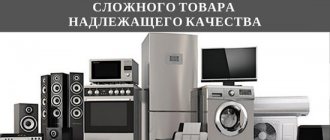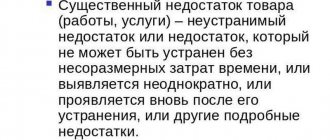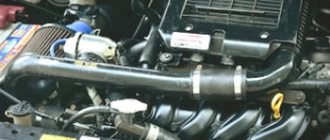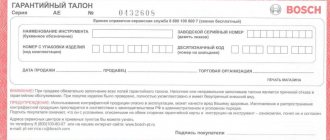Home / News and changes
Back
Published: 04/09/2019
Reading time: 3 min
0
165
For a technically complex product, it is difficult to identify the causes of malfunctions and operational problems. Therefore, its return is subject to special requirements.
- What is a technically complex product?
- What changes occurred in 2020 What products are included in the new list
- When did the legislative changes come into force?
Regulatory framework
Currently, relations related to the purchase by a citizen of a technically complex product are regulated by three main legal acts:
- Relations between the seller and the buyer are built in accordance with the norms of the Law of the Russian Federation “On the Protection of Consumer Rights” dated February 7, 1992 No. 2300-I.
- The list of goods is approved by law, given in the Decree of the Government of the Russian Federation “On approval of the list of technically complex goods” dated November 10, 2011 No. 924 and is constantly updated.
- The concept itself also appears in paragraph 11 of the List of non-food products of good quality that cannot be returned or exchanged for a similar product of another size, shape, dimensions, style, color or configuration, approved by Decree of the Government of the Russian Federation of January 19, 1998 No. 55.
What products are classified as technically complex?
Very often, problems with returns begin precisely in the category of technically complex goods, and sellers in this area have a number of reasons to refuse the consumer and truly mislead him.
But indeed, the process of returning a technically complex product is significantly different from the process of returning a non-technically complex product. If a simple product, if any defects are found in it, you can return or exchange during the warranty period or within 2 years from the date of purchase if the warranty period is not established (Article 19 of the Law on the Protection of Consumer Rights), then with technically complex goods everything is somewhat different .
For example, if you find shortcomings in a technically complex product, then the following algorithm applies:
| Reasons for returning or exchanging goods | Consumer rights under the law on the basis of paragraph 1 of Article 18 of the “Law on the Protection of Consumer Rights” |
| Defects in the product were identified (does not work, is broken, is buggy, etc.) within 15 days from the date of purchase | In this case, if 15 days have not passed from the date of purchase, then the consumer must write an application to return the goods, where he describes the identified shortcomings, indicates his data and requirements. Give the seller an application with the obligatory return of a second copy with the seller’s marks confirming acceptance of the application (save your copy with the marks and do not lose it). In this case, on the basis of paragraph 5 of Article 18 of the Law on the Protection of Consumer Rights, the seller may order an examination of the goods in order to check the reasons for the occurrence of defects. In general, your requirements must be fulfilled by the seller within 10 days on the basis of Article 22 of the Law on the Protection of Consumer Rights. |
| Defects in the product were identified after 15 days from the date of purchase | In such a situation, returns and exchanges of goods are also possible, but only under the following circumstances:
|
Now you are fully aware that returning a technically complex product is a rather tedious procedure and, in fact, without any special questions, the consumer can return such a product within 15 days from the date of purchase, then you will need to prove the presence of one of the circumstances listed in the table, which is far from always succeeds without trial.
That is why it is very important to understand how everything works and which products are considered technically complex, and such products are listed below in the table.
List of technically complex products
The list developed in 2011 included, first of all, vehicles that run on an internal combustion engine or an electric motor, such as:
- Aircraft: airplane or helicopter.
- Passenger car , motorcycle.
- Agricultural machinery: tractor, walk-behind tractor, cultivator, etc.
- Vehicles for traveling on snow , such as a snowmobile.
- A sports, tourist or recreational vehicle on water: a ship or boat, a cutter, a yacht.
Also listed are:
- Household navigation devices and wireless communication equipment.
- Desktop and portable computer , including a laptop, as well as a system unit.
- Laser/inkjet MFP , monitor.
- Satellite TV equipment , game consoles.
- TV and projector.
- Digital photo and video equipment , film equipment.
- Home appliances: washing machines, electric stoves and ovens, refrigeration units, air conditioners, etc.
- Wrist or pocket watch with 2 or more functions.
- Electrified tool.
The list, approved in 1998, lists technically complex household products with established warranty periods:
- Machines for metal cutting and wood processing.
- Electrical household machines and devices.
- Radio, photo and film equipment.
- Computing and printing technology.
- Phones and faxes.
- Electric musical instrument.
- Electronic toys.
- Gas equipment.
- Watch.
Despite the fact that many points coincide, there are also certain discrepancies. Unscrupulous sellers often try to take advantage of this legislative situation.
Consumer rights
Before purchasing, the consumer has the right to expect that the mentioned household goods have previously undergone pre-sale preparation, that the seller has examined them, checked the completeness and quality of the product, and, if necessary, assembled and adjusted it.
The label must include information such as name, brand, model and main characteristics. When purchasing, a citizen has the right to demand verification of the quality of the product, completeness, and also receives accompanying documentation for the product (technical passport), in accordance with Part 4 of Resolution No. 55.
If the purchase has already been completed and the buyer wishes to terminate the transaction, the law provides for several options. Paragraph 3 of Article 503 of the Civil Code of the Russian Federation gives the consumer the right to replace a low-quality product or return money for it.
If a defect is discovered within 15 days from the date of purchase, the citizen has the right:

- terminate the purchase and sale agreement and demand a refund of the amount paid;
- exchange the product for a similar one , but in working order, or similar in functionality, but of a different brand with compensation for the difference in cost;
- demand immediate repairs or payment of repair costs incurred by the buyer.
If a citizen prefers the option of returning the money to him, he is obliged to return the defective product to the seller at the latter’s expense.
After 15 days have passed, you can return or exchange the product if:
- a significant drawback was discovered;
- deadlines for eliminating the product shortage were violated;
- During each year of the warranty period, the product could not be used due to malfunction for a cumulative period of more than 30 days.
This is stated in paragraph 1 of Art. Chapter 18 2 of the Law of the Russian Federation No. 2300-1.
The Consumer Protection Act distinguishes between the concept of defect and significant defect.
Disadvantages include complete or partial non-compliance with the requirements that are usually presented to similar goods or purposes for which the buyer purchased the goods and which were announced to the seller before the purchase.
A significant drawback is considered to be a technical malfunction or defect, due to which the intended use is very difficult, if not completely impossible, or is life-threatening. A deficiency is considered such if:
- it cannot be eliminated;
- correcting the defect will require costs similar to the cost of the product itself;
- repeated appearance of signs of defects , including after repairs.
Is it possible to return a technically complex product of proper quality?
Exchange or return of a purchase that is included in a special list is made according to the procedure established by Article 18 of the federal law protecting consumer rights.
Important! Refusal to purchase, that is, a purchase and sale agreement, is possible only if there is a defect, including a minor one. In other cases, refusal is no longer possible. In this case, the return time limit is 15 days from the date of purchase and receipt.
Replacement of the product with an analogue (if the cost is different, then the final amount is recalculated by the difference between the price of the two models) is carried out within a week. But this point is possible if there is no dispute about a defect or shortcoming. If there is a dispute, the period increases to 20 days. This is necessary for additional verification of the quality of the sold device. During the examination, the buyer has the right to be present and take photos or videos.
If you request a refund, the seller must transfer them within 10 days from the date of request.
If you purchased an item more than 15 days ago, a refund for minor defects is not possible. Here, refusal of goods is possible only in certain cases:
- a significant flaw has been discovered that prevents the item from being used for its intended purpose;
- the deadline of 45 days for eliminating defects was violated;
- if the product cannot be used for a month or more of each warranty year due to the constant elimination of defects, that is, repairs.
Items from the list without defects cannot be exchanged due to their inclusion in the group with household use, which has a mandatory warranty period. This is established by RF PP No.
Decree of the Government of the Russian Federation dated January 19, 1998 N 55 “On approval of the Rules for the sale of certain types of goods, a list of durable goods that are not subject to the buyer’s requirement to provide them free of charge for the period of repair or replacement of a similar product, and a list of non-food products of adequate quality that are not subject to return or exchange for a similar product of a different size, shape, dimension, style, color or configuration"
What is a significant product defect?
A significant defect is the impossibility of fully eliminating the breakdown, which constantly appears after repair. Also, such a moment is possible with a significant investment of time or money for repairs.
An example of a significant defect would be the inability to use a certain function of a device.
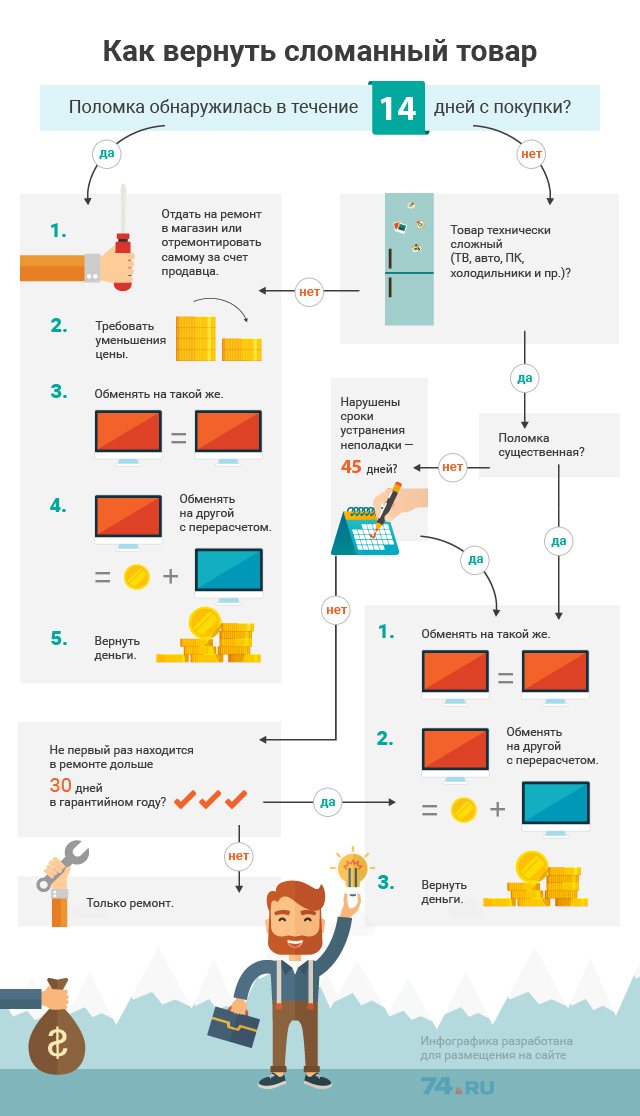
How to return a broken item
Complaint to the seller return of a technically complex product
The implementation of consumer rights from Article 18 of the PZPP No. 2300-1 in the pre-trial procedure is carried out by writing a claim addressed to the seller. The document indicates the details and data of the two parties. The essence of the claim is free-form, that is, you will need to describe the defects and shortcomings that were discovered. Requests are also indicated there, for example, a refund or exchange for an analogue.
Read also: Warranty
The document must have two copies, one of which remains with the buyer. When transferring one copy to the seller, the second copy is marked with the date of acceptance of the claim.
Important! If necessary, you can use a registered letter with a mandatory list of enclosed documents.
The complaint will be responded to within 10 days. This is established by Article 22 of the PZPP.
Lawsuit
If the seller refuses, the buyer can go to court. It may be located at the location of the seller, the buyer, or at the place where the contract was concluded. According to the 2020 rules, a claim can be filed in a magistrate’s court if the amount of the claim is less than 50,000 rubles, and in a district court if this amount is exceeded.
But there is a nuance here. Amount restrictions apply only to the material purchase requirement. Additional claims for moral damages are not limited. State duty is not paid for claims not exceeding 1 million rubles.
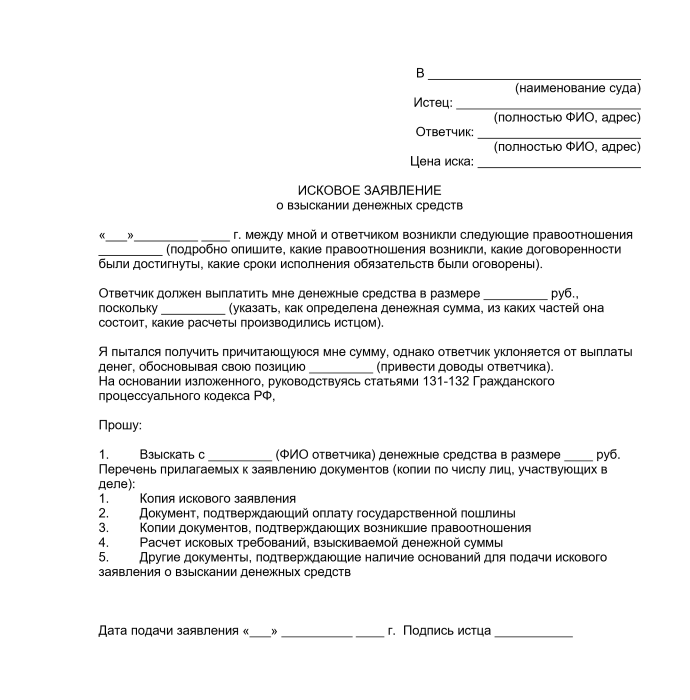
Sample statement of claim for refund of funds
According to Article 18, the claim must contain a certain requirement in the form of:
- termination of the contract and refund of funds;
- replacing an item with the same model or a similar one from another manufacturer with a price recalculation;
- reduction in cost in proportion to detected defects and breakdowns. An example would be defective parts;
- requirements for immediate elimination of breakdowns and defects.
Additional requirements include reimbursement of expenses in the form of legal costs, transportation costs, compensation for moral damage, as well as the cost of conducting an examination.
The more evidence provided to the court, the greater the chance of receiving compensation and fulfilling the requirements. If there is no evidence that the item is faulty, then the penalties against the seller will be waived. It is for this reason that an examination is required.

